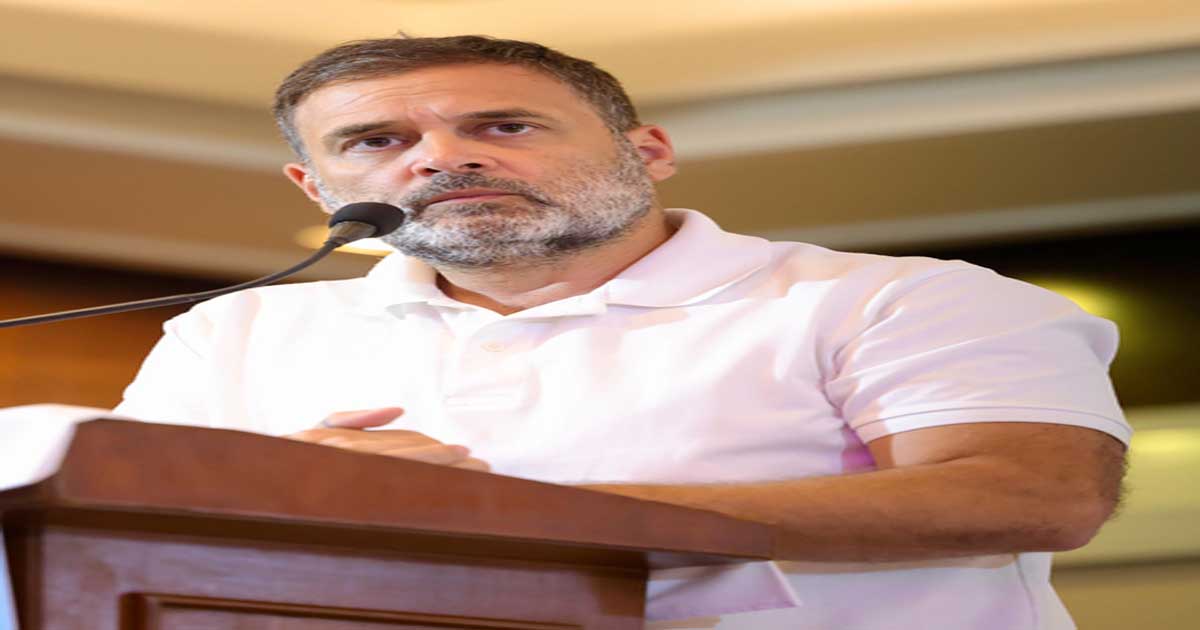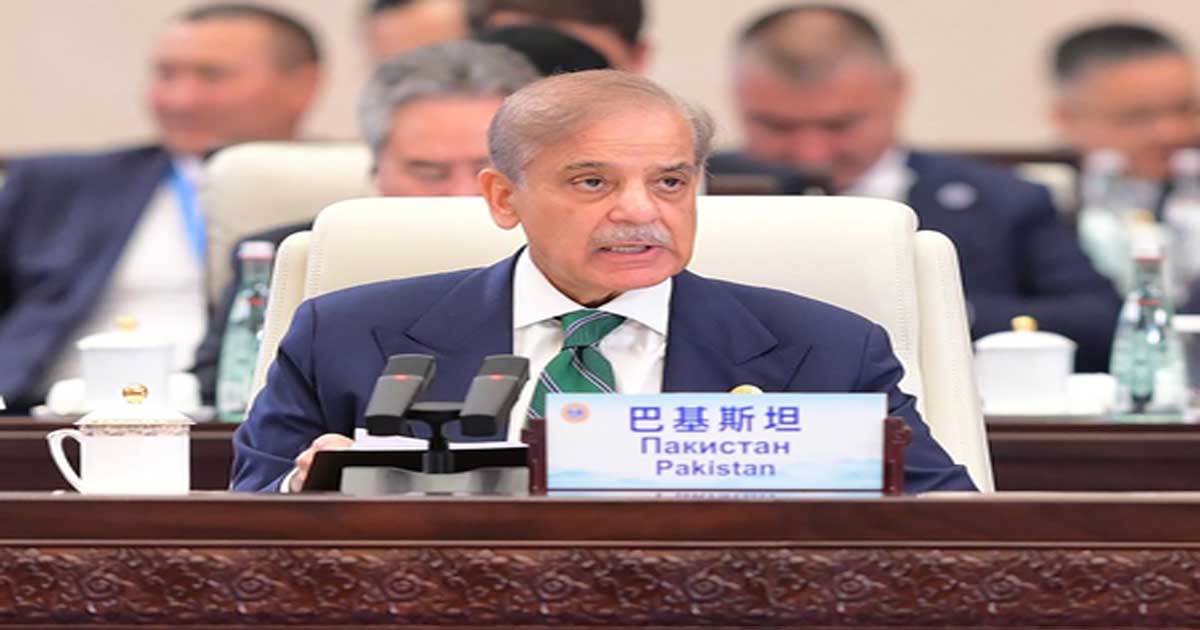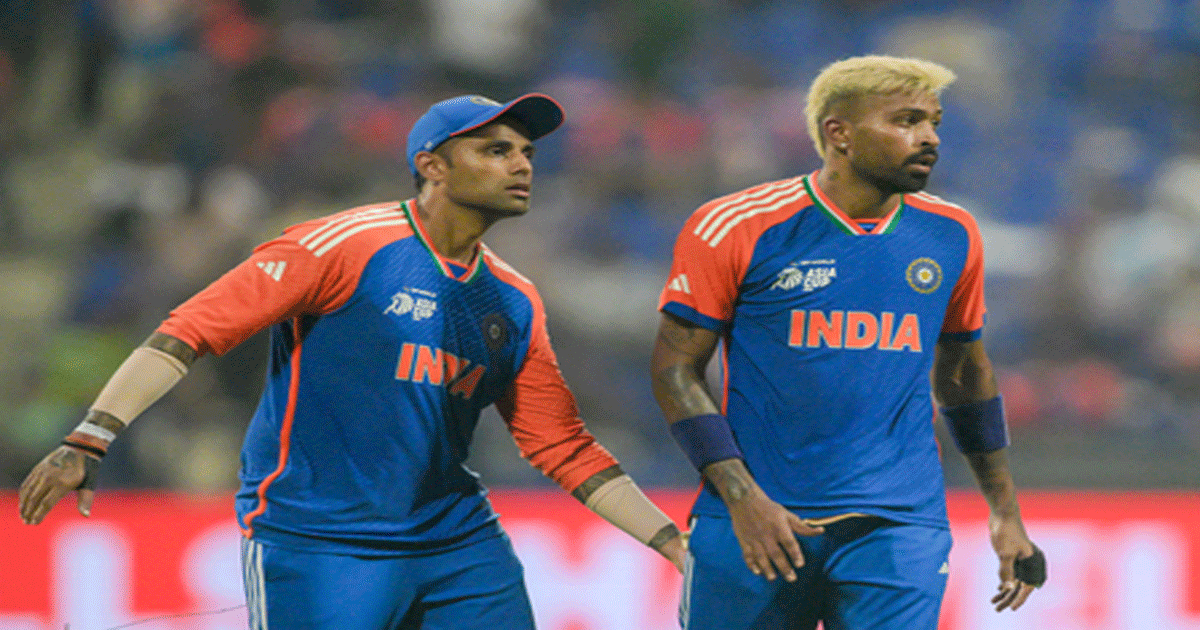International News
Xi Jinping expects to be in command till 2035
Certainly, some critique put him on a par with Deng Xiaoping or even Mao Zedong. Some years ago, Xi Jinping had made a classic statement – “One must build a good cage. If the cage is too loose, or is very good but the door is not closed, and one is free to go in and out, then that is of no use.”
Now, the Communists party in China moves on to a new central task — to achieve the “second centenary goal of building China into a great modern socialist country in all respects and to advance the rejuvenation of the Chinese nation on all fronts through a Chinese path to modernisation.
The mega Chinese goal is tied to the 100th anniversary of the founding of the People’s Republic of China — which would be 2049 — but Xi has pushed the date for “basically” realizing this goal forward to 2035.
Conveniently, that leaves the door open for Xi to still be in command of the party at the big celebration 13 years from now.
Marxists in once upon a time Red forte Tripura – used to often say the line from a play. The line of the play was of course penned obviously with a pro-Left liberal sentiment:
“Every war or struggle is for power; and power can never do good to anybody”.
The economic policy that Xi has put forward contains a similar sort of contradiction.
The central idea of the “dual circulation” policy is that China should increase its trade surplus with the wider world, while simultaneously becoming more dependent on its domestic economy to drive consumption.
Many economists think that this will be a hard balance to manage. But, in a sense, the strategy should not be seen as an exercise in economics but in politics. It mirrors precisely the idea of being highly connected to the world while closed to it physically.
But compared with real openness, it is one that would leave both sides poorer.
“China remains connected to the outside world largely through the virtual environment, in particular social media and video apps. Yet the vision of the world created within the country is very partial. State media pumps out images of the west still devastated by the virus,” says an article ‘The Guardian’.
China, Xi – And Peace in India’s North East
This is one of the most perilous periods in international history. There’s something big happening everywhere — China, Ukraine, Indo Pacific and of course Britain where Liz Truss had the shortest stint ever in history as Prime Minister.
On the last day of Communists Party Congress in China on Saturday, Oct 22, former President Hu Jintao, was ‘removed’ unceremoniously and by force by so-called ‘unnamed Chinese communist agents’.
Both China and the Chinese communists have many admirers in India and also in the northeast closer home as well.
To them New Delhi ‘could not be trusted’ but Xi Jinping’s polity should be applauded.
China is that country which has seen almost 30 years of 9 and 10 per cent of average growth even till fiscal 2016-17.
This was surely an unprecedented performance by any country at the global stage.
Importantly, during this period, around 50 per cent of global growth came from China and India was by default and otherwise part of the beneficiary list.
The drop in Chinese growth rate had impacted global trade and commerce too. In fact, the global trade shrunk as a result of the negative impact on China’s own growth graph.
At one time even India benefited and the country’s global trade was growing at an average of seven percent a year.
The politics of China and also the other global challenges make a lot of sense even in the neighbourhood.
It would impact now and it impacted regional politics even in the past.
In the context of northeast India, Mon and Tuensang were the battlefields of various ultra groups.
In the eighties, Indian security force reports used to suggest that communist China’s help and logistic support was crucial at least for one camp
Even the church lobby was unhappy.
One such internal security analysis had said that the league of western Christian countries led by the US and the United Kingdom were bemused while the Indian jawans reportedly watched from a distance what they called a snake-mongoose fight.
But enough water has flown in river Dhansiri near Dimapur since then. ‘Christ’ and his principles and values are now a public pledge. ‘Nagaland for Christ’ – as they put it.
However, it is altogether a different chapter that violence and threats pursue at different levels.
According to the annual report of the Ministry of Home Affairs, 2020, incidents of insurgency in six out of eight northeastern states declined by 80 per cent since 2014 and civilian deaths were down by 99 per cent.
The year 2020 also had recorded the lowest insurgency incidents and casualties among civilians and security forces in the last decades. This was the year of the Galwan valley conflict nevertheless.
But around September 2020, in a retort to Prime Minister Narendra Modi’s statement aimed at China that — the era of expansionism is over — the rebels also had issued a joint statement saying, as the entire world has made up its mind against expansionism, the people of West Southeast Asia are also countering the expansionism of India.
One must study these statements based on the availability of Chinese-made arms in the Northeast.
In 2020, when it was realised at the Government of India level that the Naga peace talks had been stalled, as expected the apprehension was Chinese hands.
On September 18, 2020, there was a clear setback to all efforts for reconciliation as the NSCN-IM issued a statement from its headquarters saying a separate Naga flag and constitution “must form a part of the Indo-Naga political solution”.
Given the contest, one source had said even during the UPA regime in 2011-12, Chinese agents including a woman posing as a TV journalist reportedly visited the headquarters of the NSCN-IM near Dimapur and held a three-hour-long meeting with top NSCN-IM leaders.
On September 28, 2022, NSCN-IM issued a statement alleging that the government of India has “hindered” the peace parleys.
It also said, “therefore there is an imperative need for third party intervention” in Naga talks.
International News
Rahul Gandhi begins 4-nation South American visit

New Delhi, Sep 27: Leader of Opposition (LoP) in the Lok Sabha, Rahul Gandhi, has embarked on a South American tour, during which he is scheduled to interact with political leaders, university students, and members of the business community across four nations.
The Congress media and publicity department, incharge, Pawan Khera, announced the development on Saturday but refrained from disclosing the names of the countries LoP Gandhi will be visiting.
In a post on X, Khera wrote, “Leader of the Opposition in Lok Sabha, Shri Rahul Gandhi, has embarked on a visit to South America. He is scheduled to engage with political leaders, university students, and members of the business community across four countries.”
According to the party, this marks LoP Gandhi’s first overseas visit in September and will deepen democratic, trade, and strategic ties, building on historical India–South America cooperation and Global South solidarity.
During his visit to Brazil and Colombia, LoP Gandhi is expected to interact with university students, hold meetings with presidents and senior leaders across multiple countries, strengthening democratic and strategic ties, the party said.
He is also expected to engage with business leaders to explore opportunities as India seeks to diversify trade and partnerships in the wake of US tariffs, it also said.
Earlier this month, he travelled to Malaysia, although the Congress had not issued an official statement regarding that trip. The visit sparked several questions and also drew criticism from the Bharatiya Janata Party (BJP).
The BJP took a dig at his foreign trips and BJP IT cell chief Amit Malviya shared a photograph of Gandhi, claiming that he was vacationing in Malaysia.
Taking to X, Malviya posted, “Rahul Gandhi has slipped away yet again — this time on a clandestine vacation in Langkawi, Malaysia. Looks like the heat and dust of Bihar’s politics was too much for the Congress ‘Yuvraj’, who had to rush off for a break. Or is it another one of those secret meetings that no one is supposed to know about?”
International News
Pakistan a US ally, at White House convenience

New Delhi, Sep 26: Pakistan has historically been considered an ally of the United States – during and after the Cold War – with Islamabad ready to execute at White House bidding, either for a prize or a dressing down.
Geographically, Pakistan occupies a strategic position and diplomatically shares ties with China on the one hand, and the Arab countries on the other. With most governments in Islamabad being financially and morally bankrupt and powerless against their military, the rulers have been ductile and malleable to be coerced into most deals.
Knowing that proximity to China, India, and Afghanistan makes it a key player in South Asian geopolitics, the US is also aware that with growing ties with Saudi Arabia, including the recent mutual defence pact, it can be a reason for its neighbours and partners being wary.
Washington continues to view Pakistan as a strategic partner in regional security, particularly in counterterrorism efforts. Its role in conducting covert operations from Pakistani soil against the then Soviet occupiers in Afghanistan is no secret anymore. All these, and more, which US President Donald Trump considers to be of use to his idea of ‘Make America Great Again’, draw interest to the country. Thus, a new trade agreement was signed, including a 19 per cent tariff on Pakistani imports and US involvement in developing Pakistan’s oil reserves.
Islamabad is looking at further US investments, especially in its mineral sector, which could provide a much-needed economic boost, provide jobs and infrastructure development for the beleaguered nation. Pakistan is thus trying to ignite US interest in the challenging geopolitical areas where even its military has been unable to put down the rebellion.
The US State Department has designated “The Balochistan Liberation Army (BLA) and its alias, The Majeed Brigade, as a Foreign Terrorist Organisation (FTO), and added the Majeed Brigade as an alias to BLA’s previous Specially Designated Global Terrorist (SDGT) designation” in a statement on August 11.
The restive westernmost province of Balochistan holds a wide reserve of gold, silver, copper, iron, chromite, and lithium across 1,600 mines. The northern regions of Gilgit-Baltistan and Khyber Pakhtunkhwa are said to be sitting on lithium reserves, while the Thar coalfield in Sindh, with 175 billion tons of lignite, further underscores the overall mineral reserve potential.
The US is interested in Pakistan’s rare earth minerals, crypto mining potential, and broader investment opportunities. But revolt by tribes in these areas and without a clear governance policy, the reserves remain mostly untapped. Islamabad anticipates taming the fierce uprising with US help. Thus, apart from interests in geopolitical developments, Pakistan General Asim Munir’s frequent invitations to the White House remain a matter of speculation.
Munir, who had previously been hosted for lunch by Trump a few weeks earlier, accompanied Shehbaz Sharif on the Pakistan Prime Minister’s first official visit to the White House on Friday. While the General’s presence reflected Rawalpindi’s influence over the political masters in Islamabad, there is an assumption that a solution for mining in troubled areas may have also been put on the table.
Meanwhile, reports from Washington hinted at President Trump making his guests wait about 30 minutes before hosting them for talks. That made sure that even a high-level delegation from Pakistan realised that they can not assume themselves too important.
International News
He is a very unorthodox thinker: Gavaskar praises Suryakumar Yadav’s captaincy decisions

Dubai, Sep 20: India’s cricketing legend Sunil Gavaskar praised T20I skipper Suryakumar Yadav for the decisions he took during the recently concluded Asia Cup 2025 clash against Oman. Suryakumar led India to their third consecutive win in the tournament as the Men in Blue move to the Super Fours stage unbeaten.
In the team’s third and final group stage game against Oman on Friday, Suryakumar decided not to walk out to bat during India’s innings as they opted to bat first. All other 10 players of the playing XI got game time with the bat as the skipper demoted him to No. 11.
Many experts and pundits criticised the move, but Gavaskar believed it to be a sensible decision. Speaking on Sony Sports Network, the former India captain said:
“If he had batted for even one over, he could have hit a few fours and sixes, and that would have been good for him. But the way he batted against Pakistan, maybe he does not need batting practice. He may have thought that Kuldeep Yadav’s batting could come in handy if India lose quick wickets in one of the matches. Perhaps that’s why he may have sent Kuldeep in to bat.”
Calling the 35-year-old Mumbai batter an ‘innovative thinker,’ Gavaskar added: “He is a very unorthodox thinker. We saw in Sri Lanka that he himself bowled and also gave Rinku Singh the ball. He turned the game, which seemed to have slipped away, on its head and won India the match. He is an innovative thinker. Maybe that’s why he did not bat and sent in Kuldeep and Arshdeep Singh.”
Notably, India defeated Oman by 21 runs to make it three wins in a row.
The group stage of the Asia Cup concluded with the Men in Blue’s match against Oman on Friday, with Sri Lanka, Bangladesh, India and Pakistan moving to the Super Fours.
Six games will be played in the second stage of the tournament. Every team will play the other three opponents once, and the sides finishing in the top two of the points table will progress to the summit clash.
India will commence their Super Fours campaign with a match against arch-rivals Pakistan on Saturday, 21 September, followed by games against Bangladesh and Sri Lanka on 24 and 26 September, respectively.
-

 Crime3 years ago
Crime3 years agoClass 10 student jumps to death in Jaipur
-

 Maharashtra1 year ago
Maharashtra1 year agoMumbai Local Train Update: Central Railway’s New Timetable Comes Into Effect; Check Full List Of Revised Timings & Stations
-

 Maharashtra12 months ago
Maharashtra12 months agoMumbai To Go Toll-Free Tonight! Maharashtra Govt Announces Complete Toll Waiver For Light Motor Vehicles At All 5 Entry Points Of City
-

 Maharashtra1 year ago
Maharashtra1 year agoFalse photo of Imtiaz Jaleel’s rally, exposing the fooling conspiracy
-

 National News12 months ago
National News12 months agoMinistry of Railways rolls out Special Drive 4.0 with focus on digitisation, cleanliness, inclusiveness and grievance redressal
-

 Maharashtra11 months ago
Maharashtra11 months agoMaharashtra Elections 2024: Mumbai Metro & BEST Services Extended Till Midnight On Voting Day
-

 National News1 year ago
National News1 year agoJ&K: 4 Jawans Killed, 28 Injured After Bus Carrying BSF Personnel For Poll Duty Falls Into Gorge In Budgam; Terrifying Visuals Surface
-

 Crime12 months ago
Crime12 months agoBaba Siddique Murder: Mumbai Police Unable To Get Lawrence Bishnoi Custody Due To Home Ministry Order, Says Report












